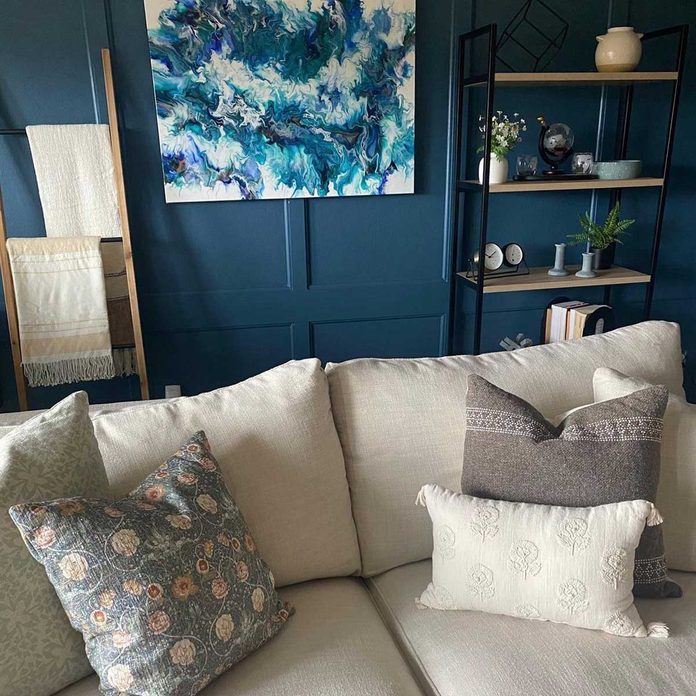
Lush Blue
Most people think a basement must be painted a light color to keep it from feeling like a dungeon. But in reality, dark colors can look stunning in a basement, as shown here by @projectrousehouse.
Together by Magnolia Home by Joanna Gaines is a rich, inviting hue. It’s a bluish-gray with slightly green undertones. Try pairing it with light furniture for a high-contrast and high-impact look.
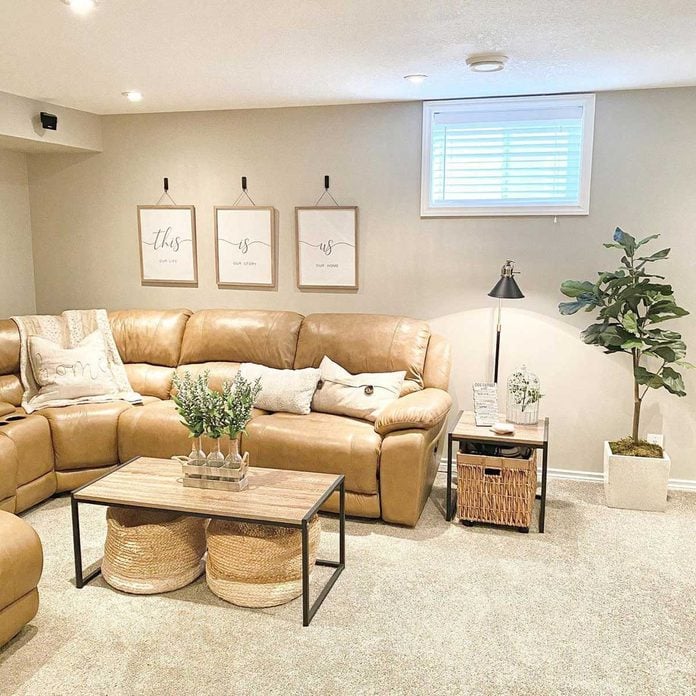
Warm Gray
If you prefer a lighter basement, Fossil Grey by Glidden is a warm, light gray that creates a solid blank canvas for a range of decor. This basement by @tayashomepaige shows how decorating with all neutral colors can create a relaxing and inviting vibe.
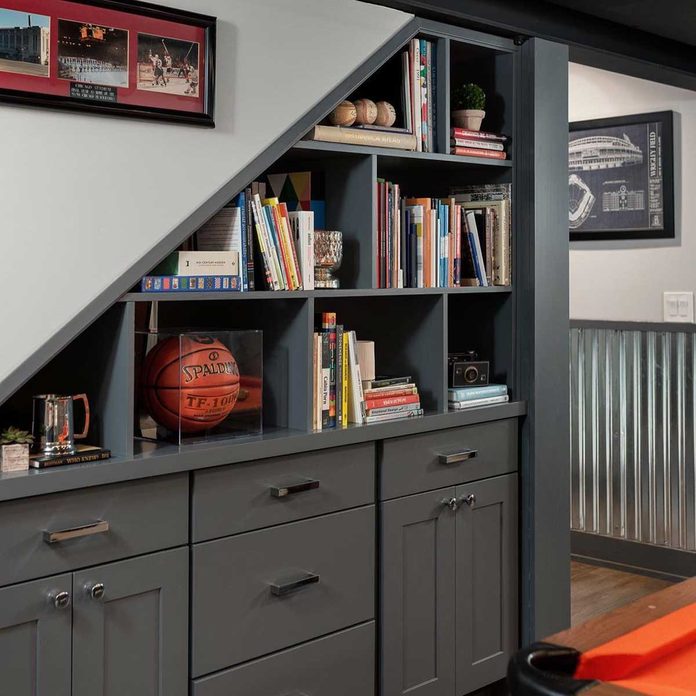
Deep Gray
If you’re not sure if you should go dark or light in the basement, try painting one element dark, like these built-in cabinets by @chadesslingerdesign. The color here is actually a stock cabinet color, but try Sherwin-Williams Peppercorn for a similar look. With light walls and dark gray cabinets, you get the best of both worlds.
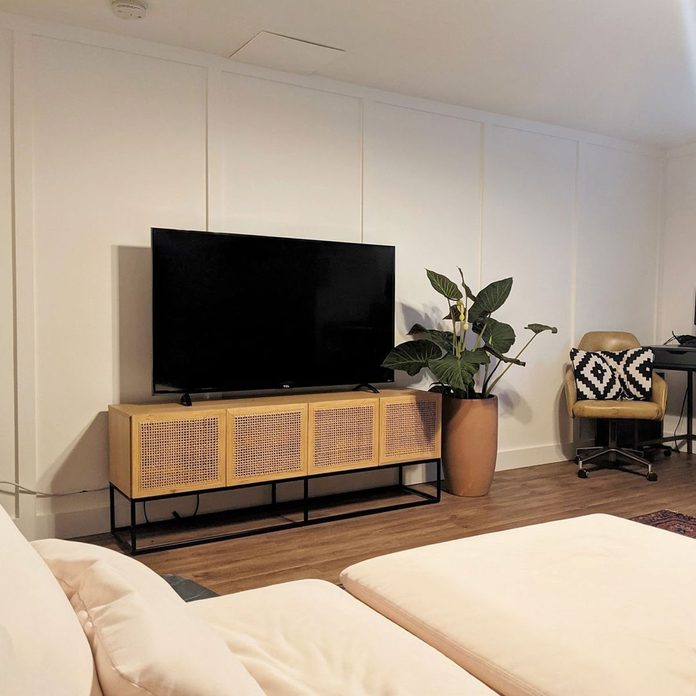
Authentic White
A common color choice in basements is white—and for good reason. White paint can brighten a space without a lot of natural light, as shown here in this basement by @havenhomesolutions. But there are so many whites to choose from! For a bright, true white paint without yellow undertones, try Polar Bear by Behr.
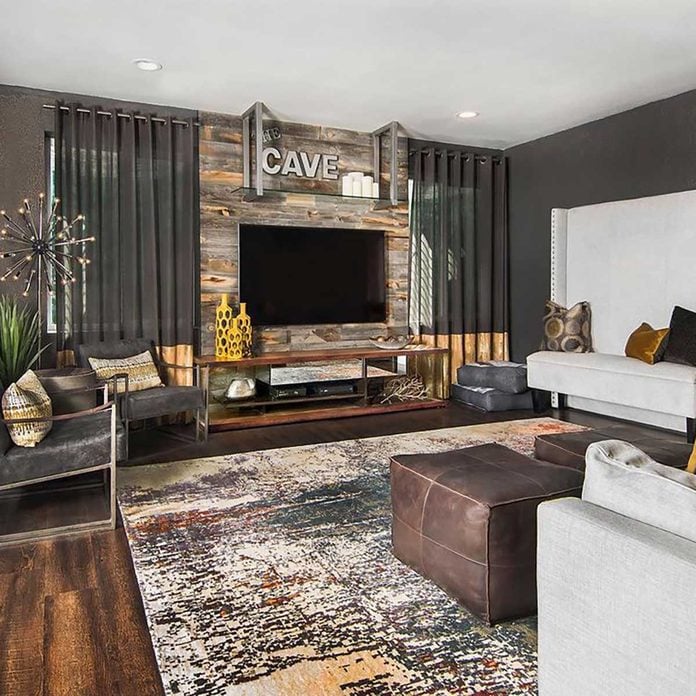
Glam Gray
Designer Gina D’Amore (@designbossgina) wanted this basement to feel different than the rest of the home, so she went bold with the paint color. The walls were first painted with a metallic gold base coat, then a crackle finish, then painted with Benjamin Moore Gray. If you’re not ready to take on such an elaborate painting technique, simply paint the walls gray, then decorate with gold accents for an equally glam look.
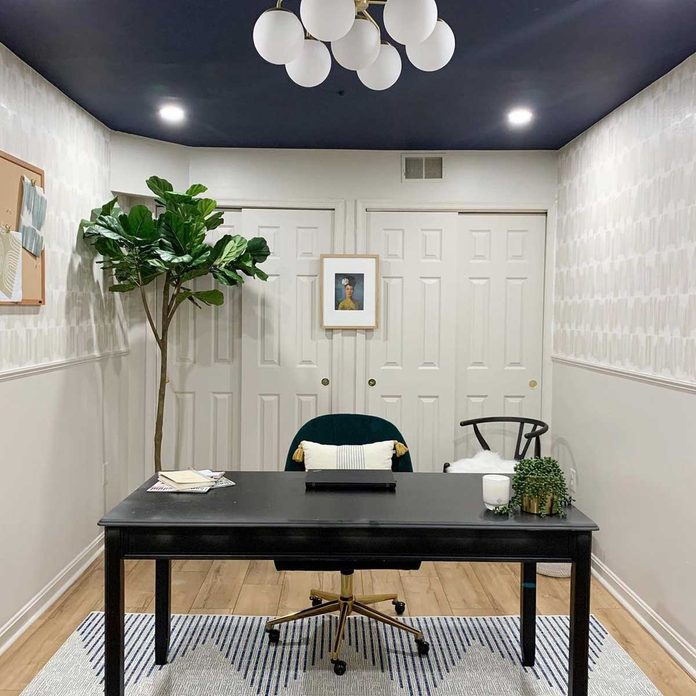
Night-Sky Blue
Basements tend to have lower ceilings than the rest of the house. To make the walls seem taller, paint the ceiling a dark color. The technique is used beautifully here by @brickendhaus, who painted the ceiling of her basement office Naval by Sherwin-Williams.
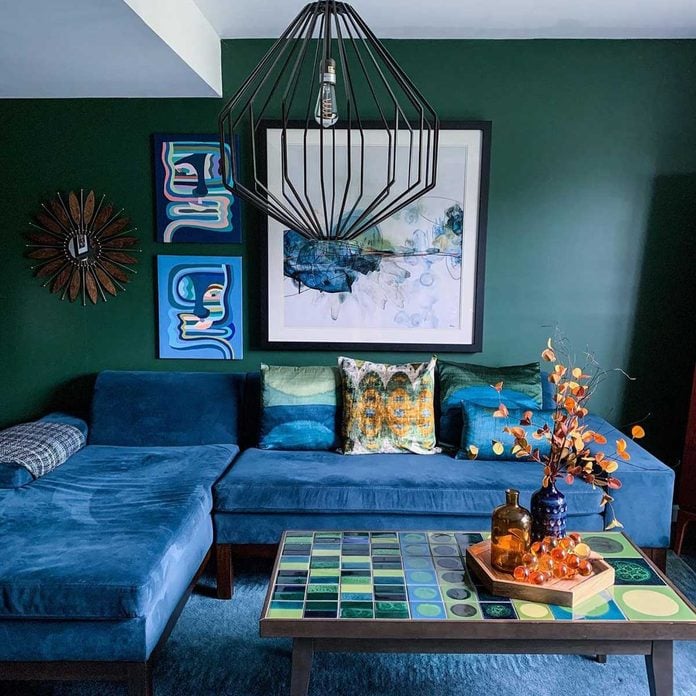
Gorgeous Green
Turn your basement into a jewel box with rich, dark colors for the walls and furniture. The dark green walls (Chimichurri by Benjamin Moore), blue sofa and pops of orange work together in this basement by @melmitchia for a jaw-dropping effect.
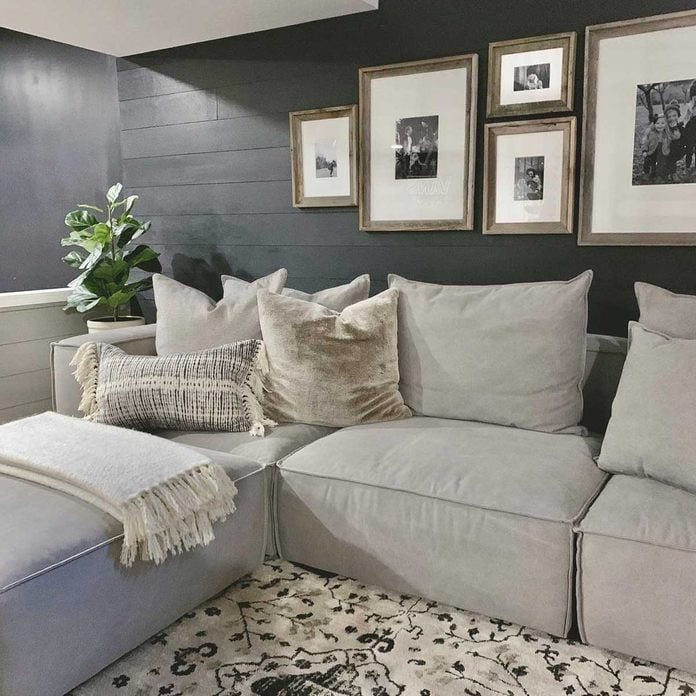
Warm Black
We’ve talked about dark colors in the basement, and you can’t go much darker than black. It’s a risky choice that can deliver beautiful results, as shown here in this basement by @samanthajacksondesigns. If you’re hunting for the right black, try Onyx by Benjamin Moore. It’ll add drama and sophistication to your basement while making it feel cozy. Your next man cave shade…?
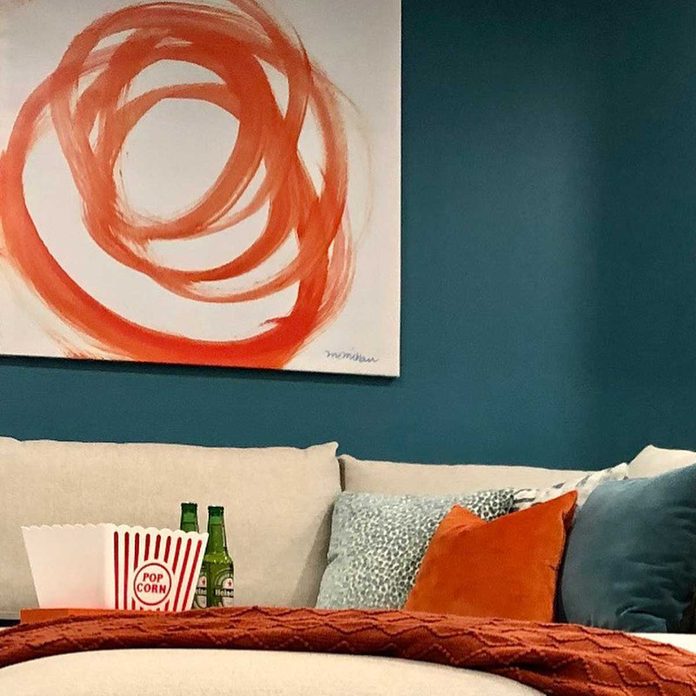
Unique Teal
The basement is a less risky place to try out exciting color combinations that might seem too bold for the main part of the house. In this finished basement by @your_design_partner, the teal walls (Under the Stars by Magnolia Home) really pop, especially when paired with the paprika orange color in the rest of the decor.
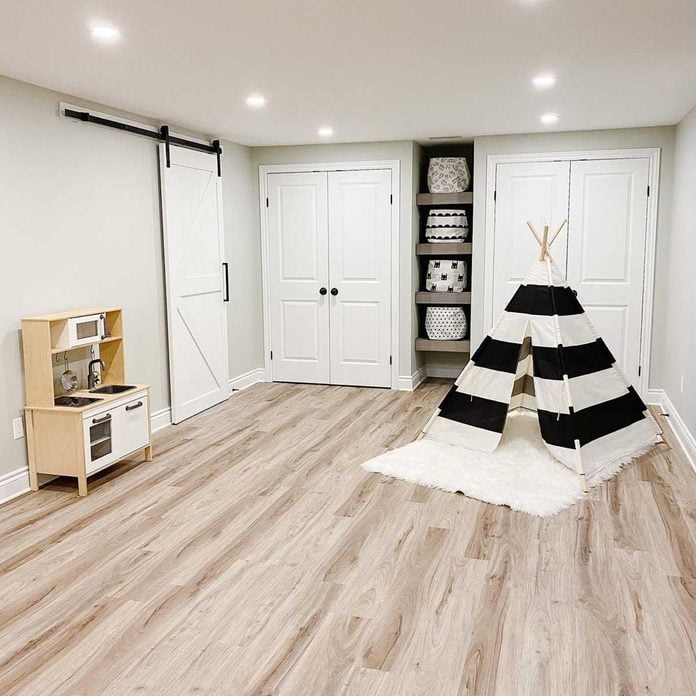
Cool Gray
For a light, cool gray wall without any warm undertones, reach for Eggshell by Valspar. This basement space by @olive.oakdecor shows how this kind of gray can make a windowless room feel open and bright.
What to Consider When Painting Your Basement
Which color paint is best for a basement?
Choosing the right color paint for your basement depends on the purpose of your downstairs space. If your basement functions as a kids’ playroom or spare bedroom, you’ll likely want to go with a warm, light color. However, if your basement is being used as a bar area for entertainment, you might want to go with a deep, rich color (like Onyx by Benjamin Moore) or include a statement accent wall color.
Should you paint your basement all the same color?
As a rule of thumb, you should never paint your whole home one color. While you can certainly get away with painting a single room all one color, we like basements with a little variety in terms of color and contrast. Painting a reading nook with a statement color, using wallpaper to create an accent wall, laying tile for added texture and painting an exposed ceiling a dark hue are all eye-catching ways to add variation to a basement space.
FAQ
Can I paint concrete basement walls?
Virtually any concrete wall can be painted, assuming the surface is free from decay and defects. Before painting, concrete walls need to be properly cleaned and stripped of any prior coatings or sealers that could prevent fresh paint from sticking.
Also, make sure you put down fresh sealants before painting, like a masonry and waterproofing option. Sanding after priming will help better protect your walls from moisture, too, which is important for preventing peeling, cracking and mold. Additionally, following with an oil-based or latex waterproof masonry paint will help prevent mold and fungus from growing.
How long does it take to paint a basement?
The time required to paint a basement depends on its size. On average, painting a basement should take three to five days. However, if you have to mud, sand or do other prep work on the walls prior to painting, the process may take an additional five to seven days.
How much does it cost to paint a basement?
Again, the cost of painting a basement depends on its size. Estimates on paint cost per square foot range anywhere from about $3 to $7.

